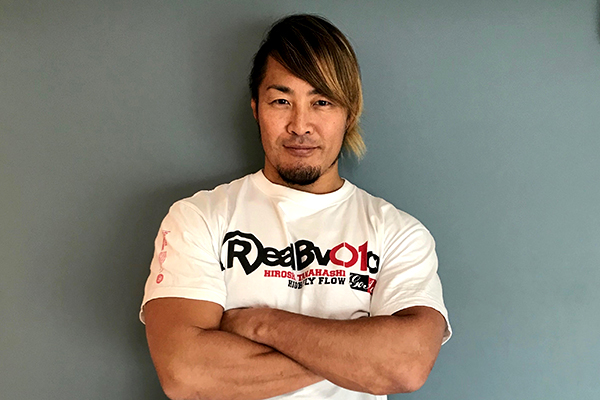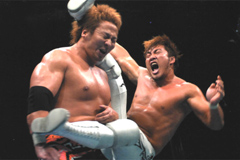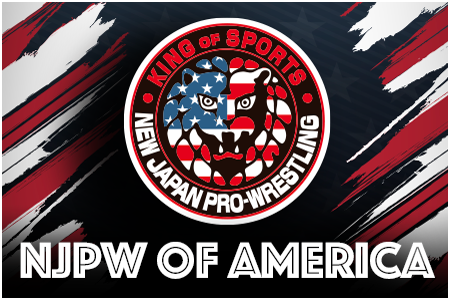Hiroshi Tanahashi’s life story can now be told in this series of autobiographical interviews, available for the first time in English!

<–Ace’s HIGH #51: Taking the Grand Prize
Ace’s HIGH #53 Coming April 28!->
–Last time we talked about your first IWGP heavyweight Championship win. With that result, you became the face of the entire company. Did it feel real to you in the moment?
Tanahashi: Well, even though NJPW wasn’t setting the world on fire at the time, there was definitely a difference in how many interviews I was getting. And I got more opportunities to do mainstream media as well. It definitely felt like the belt was a pass to a different tier of attention. People who didn’t know anything about wrestling could at least see me and go ‘ok, he’s a champion at whatever he is he does’ and that gave me more chances.
–You got the belt on your third attempt, and after six years and nine months of trying.
Tanahashi: I think timing wise it was right, not too soon and not too late either. The strange thing was that Lesnar had the third generation design of the IWGP title, but still kept the physical belt when he left. So I had the second gen belt as a temporary measure. To me, that belt was so strongly linked to Shinya Hashimoto, that there was this kind of weird connection between the two Gifu boys there.
–You then went into your first G1 Climax as champion. It was a sign of the tough times we were in that the 2005 G1 had 16 entrants, and the 2006 version of the tournament only had ten.
Tanahashi: That’s crazy to think about with the 20 man fields we have now, even in 2020 during the pandemic. But fewer entrants meant a more condensed schedule; it was pretty tough.
–The tournament started out on August 6 with you beating Manabu Nakanishi, and then you went 2-0 against Jyushin Thunder Liger two days later in Yokohama. But then the next night you lost against Giant Bernard and August 10 in Aichi you were beaten by Satoshi Kojima, who was still representing AJPW at the time. You went 2-2 in the tournament and didn’t make the finals. What matches stuck out to you?
Tanahashi: Kojima definitely left an impression. A win would have put me in the final, but losing to an outsider hurt my image to the hardcore fans I think. I was already getting booed by some of the hardcore fans who didn’t see me as representing the New Japan they liked. That loss helped feed that. My style didn’t help; I was still wrestling from underneath a lot, catching people with rollups, or having the theme being taking a lot of offense before a comeback and quick win. I didn’t look like a strong, convincing champion.
–Kojima countered a diving Slingblade with a lariat and then hit you with another to win.
Tanahashi: I lost the match I couldn’t afford to lose. You can’t be a champion and then lose to an outsider like that, and even the Tanahashi fans were disappointed. That’s the kind of situation that comes up in the G1 though.

–It was around this point in time that you started using the High Fly Flow, after using Slingblade and Dragon Suplexes as your finisher.
Tanahashi: Right. It was June that year that I started calling it the High Fly Flow I think. The first time I used it to beat someone was against Toru Yano.
–June 17 in Yamato, you and Yuji Nagata beat Yano and Tomohiro Ishii. Why did you go with High Fly Flow as a finish?
Tanahashi: I came off the top with a splash every now and then before, I’m not sure what inspired that per se, but when it came to using it for a finish, it was all about bringing new fans in more easily. It’s impactful. It’s a 100kg plus guy jumping as high as he can off the top rope and crashing into his opponent; if you’re watching pro-wrestling for the first time, it’s pretty easy to understand that hurts. Maybe there were some who thought it wasn’t flashy enough, but the idea wasn’t to appeal to the hardcores, it was about broadening pro-wrestling’s appeal.
–There was a bit of ‘you versus the world’ in there.
Tanahashi: That and I think you should be able to use your finish on anyone, any size. If I can get someone to the mat, I can hit someone with a High Fly Flow. Just like Sweet Chin Music was a knockout shot for Shawn Michaels.
–You weren’t the first to use that kind of frog splash as a finish, of course. Who did you use as a reference?
Tanahashi: Eddie Guerrero was the biggest influence for me. Just how beautiful that form was. Him using that move to beat Brock lesnar definitely left a lasting impression.
–On the Ametalk! TV show’s wrestling edition, they compared your High Fly Flow with Kotetsu Yamamoto’s splash back in the day, and your forms were all but identical.
Tanahashi: I saw that. It’s interesting to think of the history. As much as I was labelled as not being representative of New Japan by the older fan, Yamamoto was right there with Antonio Inoki as being the embodiment of ‘Strong Style’ but there he was using that splash.
–So where did the name High Fly Flow come from? Being in the zone so to speak?
Tanahashi: Kinda, yeah. I think it’s a bit about the flow of the match leading to that crescendo as well. I honestly didn’t give that much thought to the name, it just came to me, but it does roll off the tongue easily, and you instantly understand what kind of move it is. Inoki’s Cobra Twist, in Japanese, the name Mannoji Gatame instantly lets you visualise the move because the two bodies locked together look like the ‘mannoji’ or the Buddhist swastika. That kind of thing, that branding is important, I think.
–Earlier in January you wrestled for TNA, under the billing of the ‘high flying star’. Did that influence the HFF name?
Tanahashi: Aah, I didn’t think of that at the time. I have zero idea why they used that nickname; I remember finding out about it and going ‘when do I ever fly?’ (laughs)





